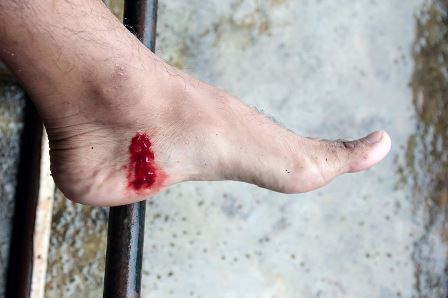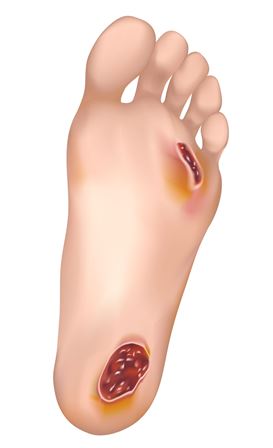An ulcer can appear virtually anywhere, both inside and outside of the body, and they can have a variety of causes. One type of ulcer that can be especially problematic, however, is a pressure ulcer. A pressure ulcer, also referred to as a bed sore, is a type of ulcer that is caused by continuous pressure being placed on the skin. These types of ulcers generally develop in people who are bedridden or who are in wheelchairs, and this is what makes them especially problematic. Because these people often have no choice but to be in a situation where skin is continuously pressing against an object, the sores are likely to persist and get worse without intervention and treatment.
Where Do Pressure Sores Usually Develop?
In most cases, pressure sores will develop on areas that have the most contact, such as the back, buttocks, and the backs of the arms and legs. Depending upon a person’s situation, however, they can develop on virtually any part of the body that is in continuous contact with a surface. As a result, people who are confined to a surface for long periods of time need to check themselves or have our medical specialist check them on a regular basis.
What Are the Symptoms of a Pressure Ulcer?
 Pressure sores will often start out as light abrasive wounds. They will turn the affected area a light red color that resembles irritation. As these sores progress, they will become open wounds that may bleed. At this stage, the risk of dealing with an infected wound is high and the sore needs to be treated right away. Continuing to sit or lay on a pressure sore will likely generate heat and moisture, making the wound a prime target for bacteria. In some cases, a pressure sore will be a deep purple color as it appears under the skin. This is because the actual damage is not on the surface and is causing blood to pool beneath the skin. Pain will generally accompany a pressure sore, and if left untreated, can lead to damage to surrounding muscle tissue and even bone over time.
Pressure sores will often start out as light abrasive wounds. They will turn the affected area a light red color that resembles irritation. As these sores progress, they will become open wounds that may bleed. At this stage, the risk of dealing with an infected wound is high and the sore needs to be treated right away. Continuing to sit or lay on a pressure sore will likely generate heat and moisture, making the wound a prime target for bacteria. In some cases, a pressure sore will be a deep purple color as it appears under the skin. This is because the actual damage is not on the surface and is causing blood to pool beneath the skin. Pain will generally accompany a pressure sore, and if left untreated, can lead to damage to surrounding muscle tissue and even bone over time.
Treatment Options
General wound care, such as the use of prescription and topical antibiotics, is often the first course of action (along with bandaging the affected area). A plan will likely need to be created to move the sufferer on a regular basis in order to avoid the presentation of new sores. If severe damage has occurred, such as damage to bone, surgery may be required.
Relief from Pressure Sores
If you are dealing with a pressure ulcer or you’re concerned about the possibility of developing them, the experts at the DFW Wound Care Center can help. Additionally, the DFW Wound Care Center also specializes in assisting individuals concerned about foot pain and diabetic wounds, as well as just general wound care.
To schedule an appointment in the areas or Plano, TX or Lewisville, TX, call 972-665-6292 or 972-318-2383.
Contact us
Schedule an appointment
with our specialists by contacting us or calling our:

